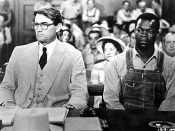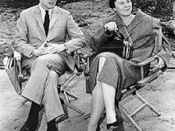In Harper Lee's novel, To Kill a Mockingbird, the author uses the small town of Maycomb, Alabama as a forum for different views on civil rights. On a smaller scale, Lee uses the relationship between Scout, her aunt, her father, and her housekeeper, to show how racism affects everything. The question of civil rights plays out not only through the trial of Tom Robinson, but also through the everyday interaction between the Finch family and their housekeeper Calpurnia. In the process of growing up Scout must chose where she fits into the whole racial scheme, and her relationship with her housekeeper plays a crucial part in deciding this.
Harper Lee's novel, To Kill a Mockingbird, focuses on the maturation of a brother and sister in the "tired old town(Lee 3)" of Maycomb, Alabama, in the 1930ÃÂs. Maycomb, a classic southern town full of gossip, tradition and burdened with a legacy of racism, seems a strange place to stage a drama which encourages equal treatment and non prejudice.
However, the narratorÃÂs fresh outlook on the sleepy town furnishes the reader with a multitude of viewpoints on civil rights. The traditional Southern racism of Maycomb is looked at through the eyes of our young narrator, Scout Finch. ScoutÃÂs innocent perspective compels her to ask questions about why whites treat blacks the way they do. These questions are crucial in ScoutÃÂs search for her own identity. Scout must come to terms with the racism of her town and how it affects the people in her life. She must find her own position and what role she will play in the whole racial game. A number of people greatly influence Scout. The two major role models in her life, her Aunt Alexandria and her father Atticus, pull Scout in two opposing directions.


